Concurrent Session 8 | May 8 | 10:00 – 11:30 AM
Session 8.1 A
Transportation | Road to P.E.L. and Beyond: Getting Transportation Infrastructure Right
10:00 – 11:00 AM
| About the Presentation |
|
Integration of environmental and socioeconomic considerations into transportation decision-making is critical in shaping the outcome of one of the most significant infrastructure program pipelines in recent decades. Based on the author's experience with planning and delivering major transportation infrastructure, this presentation will focus on the planning-environmental linkage, its role in the project development process, and the framework it provides. Benefits for transportation agencies will be highlighted with examples including Infrastructure Investment and Jobs Act- (IIJA-) funded projects.IIJA, signed into law on November 15, 2021, is the largest long-term investment in our infrastructure and economy in the nation's history, providing $550 billion over four years for infrastructure, including in roads, bridges, and mass transit, water infrastructure, resilience, and broadband. The RAISE program commits to USDOT funding, especially in adversely affected communities. To deliver equitable outcomes, decision-makers must appreciate that environmental planning is foundational to equity, public health, and sustainable development. The Reconnecting Communities program would restore community connectivity through reimagining infrastructure. The National Environmental Policy Act (NEPA), Environmental Justice (Executive Order 12898), and Health Impact Assessment provide the planning framework that agencies must embrace to ensure equitable outcomes. Transportation agencies are required to establish procedures for complying with NEPA and associated federal and state laws and regulations. These procedures provide planning, environmental, and engineering frameworks for the consistent development of analysis, technical studies, and environmental documentation for transportation projects. The resulting study is the first step in the project development process to ensure that transportation projects are developed with consideration of current engineering standards, project costs, and minimization of social and environmental impacts while involving the public. Transportation agencies can conduct a Planning and Environment Linkages (PEL) study, which represents a collaborative and integrated approach to transportation decision-making that 1) considers environmental, community, and economic goals early in the transportation planning process, and 2) uses the information, analysis, and products developed during planning to inform the environmental review process. This presentation will establish the need for and benefit from embracing the PEL framework in delivering transportation infrastructure that would define the 21st century.
This presentation will establish the need for and benefit from embracing the Planning and Environment Linkages (PEL) framework in delivering transportation infrastructure that would define the 21st century.
|
| About the Speakers |
|
 Kovid Saxena, AICP, LEED AP, ENV SP Kovid Saxena, AICP, LEED AP, ENV SP
Principal | National Director, Environmental Planning
Sam Schwartz Consulting
Kovid Saxena is a Principal and National Director of Environmental Planning at Sam Schwartz Consulting. As a leader in environmental planning and policy, he has over 20 years of experience in providing consulting and advisory services for environmental planning, real estate, community development, transportation, and infrastructure projects. With a background in the management of complex projects and leading multidisciplinary teams, Kovid has led a broad range of environmental impact assessments, feasibility studies, transportation and land use planning studies, and alternatives analyses. He currently serves on the NAEP board of directors and the Urban Land Institute New York Infrastructure Council. Kovid holds a Master of Science in Urban Planning from Columbia University.
|
|
 Ed Frantz Ed Frantz
Transportation Environmental Specialist
Sam Schwartz Consulting
Ed Frantz worked for the New York State Department of Transportation for over 20 years, including as a Regional Environmental Manager and Adirondack Park and Forest Preserve Manager. Prior to that, Mr. Frantz worked six years for the NYS Department of Environmental Conservation as a Wetlands Specialist. He currently serves on the board of the NYS Wetlands Forum, is a former Chairman of the NYS Flora Association, a member of the Abstract Review Team for the International Conference on Ecology and Transportation, a founding member of the Adirondack Park Invasive Plant Program, a former board member for the NYS Invasive Plant Council, and serves on the National Research Council- Transportation Research Board: Committee on Ecology and Transportation (ADC 30).
|
Session 8.1 B
Transportation | PEL Across the Continent
11:00 – 11:30 AM
| About the Presentation |
|
The FHWA Planning and Environment Linkages (PEL) program is being successfully implemented by DOTs throughout the country. Connecticut DOT (CTDOT) has multiple ongoing PEL studies: The I-84 Danbury PEL study is expected to be completed next year by CTDOT and the I-95 PEL study has recently been initiated. The extensive and outstanding collaborative efforts of the CTDOT team, the design team, and the PEL team is what truly brings this PEL to fruition. These PEL study areas are in heavily developed corridors replete with all the challenges and opportunities such corridors bring with them: environmental justice, cultural and historic properties, local mobility issues, wetlands and floodplains, sensitive species habitat, and known contaminated properties. These PEL studies have integrated regional, state, and local municipal planning studies and engaged the public from the onset. Active stakeholder participation has been integral in defining the PEL Study purpose and provides ideas for solution-based concepts to address the PEL Study purpose. Some concepts were identified as early action or break-out projects having independent utility. The PEL process has resulted in viable concepts with extensive public engagement prior to triggering the NEPA clock, while also developing a suite of potential breakout projects with independent utility that can be expected to provide near-term benefits that support the PEL purpose.
We will discuss:
- Different states' approaches to the PEL process
- How these ideas can be used in every state's incorporation of the PEL process
- How planning of transportation projects can be used to inform the upcoming NEPA process
|
| About the Speaker |
|
 Rick Black Rick Black
Principal Scientist of Ecology and Biodiversity, NEPA & Ecology Sector Lead - Intermountain Region
SLR International Corporation
Rick Black has over 30 years of consulting experience, as well as a diverse background in federal regulations, policy, project and team management as well as technical field expertise in biology, ecology, and restoration. Over the past 25-30 years Rick has served clients in a myriad of markets: Transportation (Departments of Transportation, Federal Rail Authority, Transit Authority, Federal Aviation Administration), Energy Development, Power and Transmission, Oil and Gas, Mining, and Public Lands. Rick's policy and regulation experience includes management of National Environmental Policy Act (NEPA) documents, corridor permitting, FHWA's PEL process, Section 7 and Section 10 consultation, environmental assessments, and wetland permitting.
|
Back to Top
Session 8.2 A
Biological Resources | Aquatic Organism Passage (AOP) Grant Program
10:00 – 10:30 AM
| About the Presentation |
|
The Agencies under the Department of Transportation (Federal Railroad Administration, Federal Highway Administration, and Federal Transit Authority) are seeking applications for the Aquatic Organism Passage (AOP) grant program. This program under the Bipartisan Infrastructure Law (BIL) prioritizes projects that improve fish passage for anadromous fish listed as Threatened and Endangered (T&E), could reasonably become listed as T&E, identified as prey for endangered species, threatened species, or protected species including Southern Resident orcas or are identified as climate resilient stocks. The AOP program prioritizes projects that would open up more than 200 meters upstream of anadromous fish habitat before the end of the natural habitat. Specifically, the AOP program awards projects that replace, remove, and repair weirs and culverts. This presentation will highlight some of the projects that have been selected and provide some updates on active projects. This presentation will also provide information about where the agencies are in the review process. The BIL was signed on November 15, 2021. $800M was appropriated over a 5-year period from 2022 through 2026.
Objectives:
- Explain the AOP grant program and how entities can apply for this grant program through 2026
- Provide updates on projects that have been selected for the program
|
| About the Speakers |
|
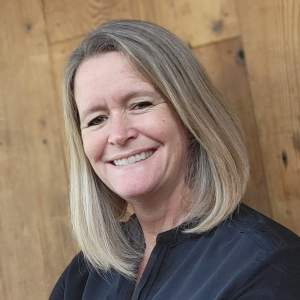 Corrie Veenstra Corrie Veenstra
Environmental Protection Specialist
Department of Transportation, Federal Railroad Administration
Corrie is a seasoned Environmental Protection Specialist, contributing her expertise to the Human and Natural Environment Team within the Environmental Program at FRA. With a focus on Clean Water Act, Endangered Species Act, floodplains, and other environmental matters, she provides invaluable advice to the Environmental Program. Before her role at FRA, Corrie played a pivotal role in habitat restoration at Bonneville Power Administration. She has dedicated over 20 years to the Environmental Regulatory field. Corrie holds a Bachelor of Science in Wildlife, Fisheries, and Conservation Biology from the University of California, Davis.
|
|
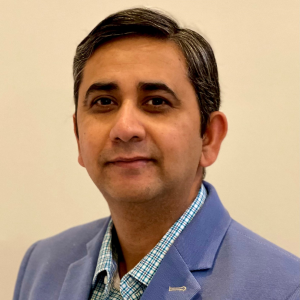 Abhishek (Abhi) Kapoor Abhishek (Abhi) Kapoor
Hydraulic Engineer
Federal Highway Administration (FHWA) - Office of Bridges and Structures
Abhi works on a team of Hydraulic and Geotechnical Engineers within the Office of Infrastructure at FHWA. He has been working on the National Culvert Removal, Replacement, and Restoration Grant Program (Culvert AOP Program) for the past year, where he has been involved in all aspects of the program from preparing the Notice of Funding Opportunity (NOFO) to finalizing awards. Prior to his current position, he was the team lead for the Hydraulics Team at Eastern Federal Lands Highway Division, where he prepared Hydrology and Hydraulic (H&H) analysis reports for projects of all levels of complexity.
|
Session 8.2 B
Biological Resources | Using an EIS to Advance an Expansive but Contentious Estuary Restoration Project
10:30 – 11:00 AM
| About the Presentation |
|
The 260-acre Capitol Lake Deschutes Estuary is located on the Washington State Capitol Campus, in Olympia, Washington, at the base of the Puget Sound. Capitol Lake was formed in 1951 following construction of a dam, which restricted flow between the Deschutes River and Puget Sound and transformed the expansive Deschutes Estuary into a freshwater lake. The sole purpose of the dam was to create a reflecting pool of water for the Washington State Capitol Campus. For decades, Capitol Lake was used for recreation by the local community. Today, it is closed to active public use due to invasive species. There are also chronic violations of water quality standards and shallow conditions from ongoing sediment accumulation. Between 2018 and 2022, the Washington State Department of Enterprise Services completed an Environmental Impact Statement to evaluate the potential impacts and benefits of three natural resource management alternatives. A Managed Lake Alternative would retain the dam but would implement active management to address invasive species and accumulated sediment. An Estuary Alternative would remove the dam and restore the expansive Deschutes Estuary. A Hybrid Alternative would also remove the dam but would construct a new retaining wall to create a smaller reflecting pool. After significant technical analyses, more than 40 stakeholder meetings, and a decision-making process custom-developed for this project, the Final EIS identified estuary restoration as the Preferred Alternative. As part of the estuary restoration, a new 5th Avenue Bridge will be built and the existing 5th Avenue Bridge and Dam will be removed to restore tidal exchange. Approximately 85 acres of salt marsh habitat will be established along the shoreline. The project will also construct approximately 1 mile of boardwalks along the shoreline and restore boating and fishing. Dam removal will significantly improve climate resiliency across downtown Olympia, with maximum flood elevations reducing by up to one foot compared to conditions with the dam in place. Concurrent with the EIS process, there were significant efforts with local governments and other key stakeholders to develop and execute a Memorandum of Understanding to provide shared funding for increased sediment management. This is meaningful because recreational marinas and the Port of Olympia are immediately downstream of the dam. The Deschutes River transports approximately 35,000 cubic yards of sediment each year; much of this deposits behind the dam under existing conditions, but would move downstream to navigational areas after dam removal. The MOU is a critical component of the approach to minimize and mitigate impacts to downstream resources and ensure that the vibrant Olympia waterfront can coexist with the Deschutes Estuary, as it once did. The project is in design and permitting now and DES continues to work closely with the Squaxin Island Tribe and the other key stakeholders.
Objectives:
- Discuss approach to evaluating alternatives in an EIS that were so different (entirely different waterbodies)
- Describe custom decision-making process
- Overview significant engagement with Tribe and stakeholders that helped to move this project forward after stalling for several decades
- Review the MOU that we added to the EIS process for shared funding of a key mitigation measure associated with estuary restoration
- Provide a project update
|
| About the Speaker |
|
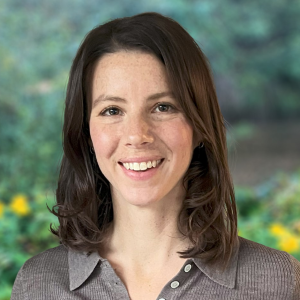 Tessa Gardner-Brown Tessa Gardner-Brown
Principal and Senior Environmental Planner
Floyd|Snider
Tessa Gardner-Brown is a Principal and Senior Environmental Planner at Floyd|Snider, a 50-person environmental consulting firm in Seattle. Tessa’s career focus is on strategic management and environmental review and permitting for complex waterfront projects in the Puget Sound region. She was the Project Manager for the Capitol Lake – Deschutes Estuary EIS and is continuing as Project Manager for design and permitting of the $150-$250M 260-acre estuary restoration project. Tessa was the Senior Environmental Planner for the Elliott Bay Seawall Project that reconstructed the shoreline infrastructure across 1 mile of downtown Seattle waterfront. She has served in a similar role for the SR 520 Bridge Replacement Project, which replaced the longest floating bridge in the world and bisected a range of protected resources including critical habitat, wetlands and historic districts.
|
Session 8.2 C
Biological Resources | Navigating the Murky Waters of Regulation Under the Changing Waters of the United States Definition
11:00 – 11:30 AM
| About the Presentation |
|
In the last decade, there have been four federal rules finalized by the U.S. Environmental Protection Agency (EPA) and the U.S. Army Corps of Engineers (USACE) defining Waters of the United States (WOTUS) for purposes of Clean Water Act requirements and regulation. There have also been six Supreme Court cases related to this topic with decisions that impacted the WOTUS definition. However, a clear definition of WOTUS remains a topic of debate. For the arid western United States, a portion of the most recent Supreme Court decision and subsequent EPA/USACE rule incorporating the decision in the WOTUS definition focused on relatively permanent waters (RPWs) and non-relatively permanent waters (non-RPWs). These terms are an especially important topic in Arizona, where limited numbers of streams and rivers in the low desert have year-round flow and the majority of drainages are non-RPW. Without clear guidance defining these terms, it remains murky how states like Arizona implement the rule for the purposes defined in the Clean Water Act. To make science-based decisions and add clarity for stakeholders, the Arizona Department of Environmental Quality (ADEQ) embarked on a journey of researching existing science, information, and data sources related to flow permanence. The result is a weight-of-evidence approach that analyzes various data and information and scores the results of that analysis to assign a flow regime that identifies the water as an RPW or a non-RPW. To ensure precision and accuracy, ADEQ also conducted a validation study of various methodologies interpreting the scores. This presentation will outline the weight of the evidence approach developed by ADEQ, review the results of the validation study, and give examples of how ADEQ is utilizing the methodology developed to make decisions under the Clean Water Act.
Objectives:
- Share the methodology for determining flow permanence for purposes of Clean Water Act regulation.
|
| About the Speakers |
|
 Erin Jordan, PhD Erin Jordan, PhD
Section Manager
Arizona Department of Environmental Quality
Erin Jordan is a Section Manager at the Arizona Department of Environmental Quality (ADEQ) and is responsible for the team that works to protect and enhance surface water quality in the state. In addition to three bachelor’s degrees, Erin earned a PhD from the University of Arizona in Arid Land Resource Sciences. Her academic work is focused on natural hazard risk assessment and perception. Professionally and prior to joining ADEQ in 2017, Erin was a broadcast meteorologist and video editor, working at television stations in North Carolina, Florida, Minnesota, West Virginia and Arizona.
|
|
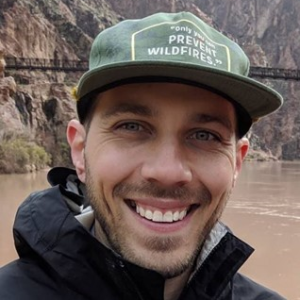 Jonathan Quinsey Jonathan Quinsey
Senior Associate Legal Specialist
Arizona Department of Environmental Quality
Jonathan Quinsey is an attorney specializing in environmental law. A proud alumnus of Lewis and Clark Law School, where he earned his Juris Doctorate, Jonathan has dedicated his career to environmental protection and regulatory affairs. Since 2017, he has been a key member of the Arizona Department of Environmental Quality. His expertise and leadership were instrumental in the development and implementation of Arizona's Surface Water Protection Program, a groundbreaking initiative in the state. This program marks a significant milestone in Arizona's environmental policy, showcasing Jonathan's commitment to safeguarding natural resources in his home state.
|
Session 8.4
Professional Development | Next Level: How to Become a Certified Environmental Professional
10:00 – 11:30 AM
| About the Presentation |
|
This presentation will review the reasons for environmental professionals to obtain their Certified Environmental Professional (CEP) credential. We'll present why the credential is important in our contemporary industry, the advantages of being certified, opportunities provided by the organization as a CEP, and how the process works. The application process has multiple steps, and we'll cover the content and purpose of each, including tools and resources provided along the way such as mentoring and the CEP-In Training (CEP-IT) program. Come learn how to set yourself apart from the crowd, elevate the standard of professional practice, and streamline your application process in this session. Members of the Academy of Board Certified Environmental Professionals (ABCEP) Board of Trustees and Certification Review Board (CRB) will be on hand to answer questions and provide tips to craft your application.
Objectives include:
- Understand what the CEP credential represents
- Understand the CEP application process
- Understand where to find tools and resources to apply for the credential
- Learn at least two ways the CEP credential can enhance your professional practice
|
| About the Speaker |
|
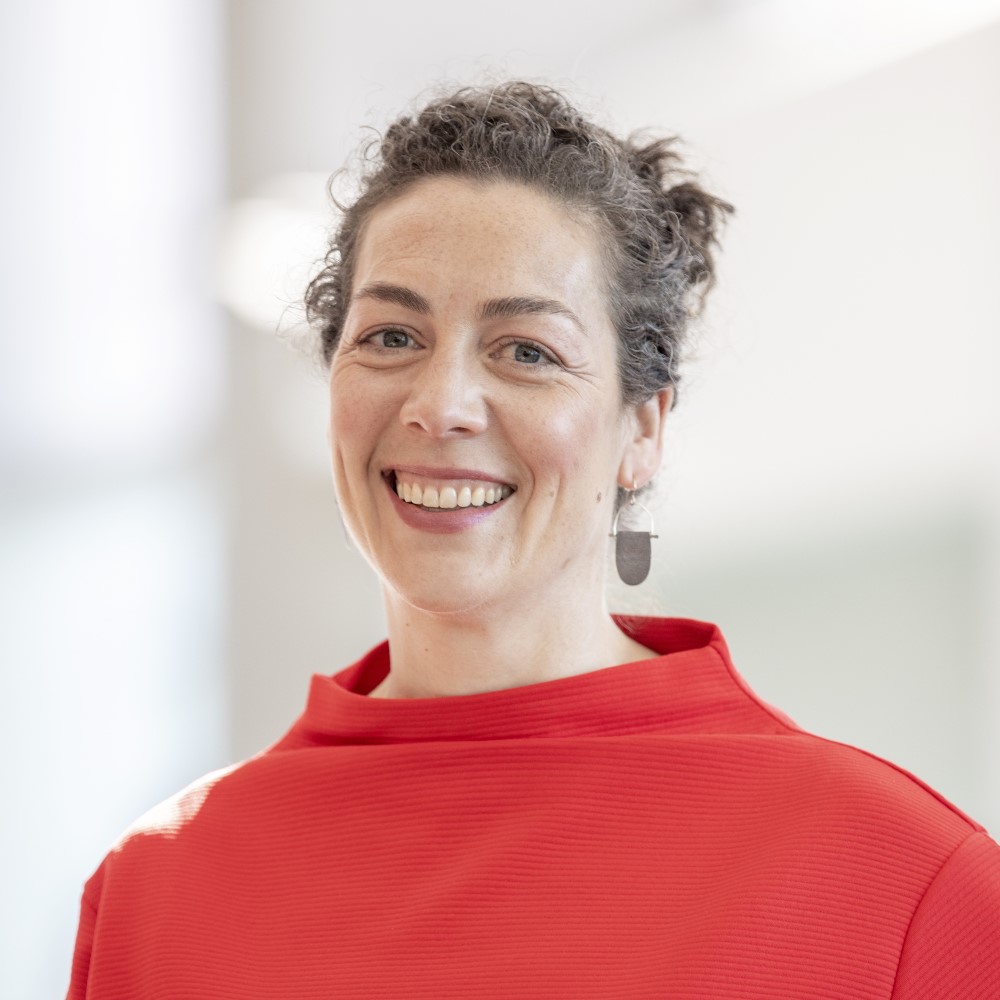 Anna Kohl, CEP Anna Kohl, CEP
Trustee
Academy of Board Certified Environmental Professionals
Anna has been a CEP-IT and CEP for over 10 years and currently serves as Secretary on the ABCEP Board of Trustees. As a Senior Environmental Project Manager at HDR in Alaska, Anna is actively engaged in all technical discipline aspects pertinent to the NEPA process, as well as with agency and stakeholder coordination and communication. Anna’s work includes mentoring early-career professionals in both technical and operational pathways, including identification of professional credentialing and networking programs. Active in NAEP and the Alaska NAEP Chapter, Anna is committed to advancing the environmental practice through collaborative learning opportunities with colleagues.
|
Back to Top
Back to Schedule
|